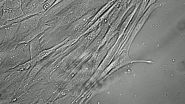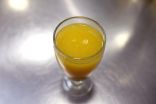(Press-News.org) The Institute for Quality and Efficiency in Health Care (IQWiG) investigated in a dossier assessment whether propranolol offers an added benefit in comparison with the appropriate comparator therapy in infants with proliferating infantile haemangioma (sometimes called "strawberry mark").
According to the findings, there is an indication of major added benefit of propranolol in some children, i.e. those with haemangioma with a risk of permanent scars or disfigurement. In contrast, an added benefit is not proven for children with life- or function-threatening haemangioma, or with ulcerated haemangioma with pain or lack of response to simple wound care measures, because informative data are lacking.
Not every haemangioma requires systemic treatment
Propranolol is a beta-blocker, which is used to treat hypertension, among other things. Under the trade name Hemangiol, it has also been approved since April 2014 for the treatment of infants who have proliferating infantile haemangioma requiring treatment and who are aged five weeks to five months at the start of treatment. Infantile haemangioma occurs in an estimated three to five percent of all newborns. But only a small proportion of them require systemic treatment: when the haemangioma is life- or function-threatening, when it is ulcerated with pain or lack of response to simple wound care measures, or when it has a risk of permanent scars or disfigurement.
The Federal Joint Committee (G-BA) specified individual treatment as appropriate comparator therapy for these therapeutic indications. The drug manufacturer further specified this comparator therapy as watchful waiting in its dossier.
Placebo arm accepted as watchful waiting
The manufacturer dossier contained data from a relevant double-blind placebo-controlled approval study (V00400SB 201), which included children aged 35 to 150 days who were at risk of permanent scars or disfigurement from their haemangioma. No conclusions on the added benefit of propranolol could be drawn for the remaining therapeutic indications.
Regular medical checks and observation of the course of disease ensured that necessary interventions could be started as soon as they were medically indicated in children in the placebo arm. Hence this study arm was accepted as watchful waiting and in the sense of individual Treatment.
Visible part of haemangioma regressed more
The main goal of the study was to assess the resolution of the target haemangioma, which was assessed in two ways. On the hand, resolution of the component of the haemangioma that was externally visible was evaluated based on the centralized assessment of photographs. On the other hand, the investigator assessed in a clinical examination (possibly also using photographs) the degree of resolution of both the visible and the deep component of the haemangioma. There was an indication of major added benefit of propranolol only for the outcome "complete or nearly complete resolution of the visible component of the target haemangioma".
There was no proof of added benefit for some of the patient-relevant outcomes - partly because they were not investigated or no evaluable data were available, partly because there were no statistically significant differences between the treatment groups. This applied to mortality, the time to first sustained complete or nearly complete resolution of the target haemangioma, complications of the target haemangioma, health-related quality of life, serious adverse events and bronchospasm.
Positive effects predominate
Treatment discontinuations due to adverse events occurred statistically significantly more often in the placebo arm. However, these also included events resulting from worsening of the haemangioma or lack of efficacy of the study medication. Hence it could only be derived from this outcome that propranolol has no greater harm than the comparator therapy. In contrast, potential harm from propranolol could not be completely excluded regarding the outcomes "infections and infestations" and "diarrhoea".
Overall, the potential negative effects, which were mainly assessed as non-serious, did not lead to a downgrading of the positive effect in the resolution of the visible part of the target haemangioma. Hence there is an indication of major added benefit for children who are at risk of permanent scars or disfigurement and for whom watchful waiting in the sense of individual treatment is an Option.
In contrast, an added benefit of propranolol versus the appropriate comparator therapy is not proven for children with life- or function-threatening haemangioma, or with ulcerated haemangioma with pain or lack of response to simple wound care measures.
G-BA decides on the extent of added benefit
The dossier assessment is part of the overall procedure for early benefit assessments according to the Act on the Reform of the Market for Medicinal Products (AMNOG) supervised by the G-BA. After publication of the manufacturer's dossier and IQWiG's assessment, the G-BA conducts a commenting procedure, which may provide further information and result in a change to the benefit assessment. The G-BA then decides on the extent of the added benefit, thus completing the early benefit assessment.
INFORMATION:
An overview of the results of IQWiG's benefit assessment is given by a German-language executive summary. In addition, the website » http://www.gesundheitsinformation.de, published by IQWiG, provides easily understandable and brief German-language information on propranolol.
The G-BA website contains both general English-language information on benefit assessment pursuant to §35a Social Code Book (SGB) V and specific German-language information on the assessment of propranolol. More English-language information will be available soon (Sections 2.1 to 2.6 of the dossier assessment as well as subsequently published health information on » http://www.informedhealthonline.org).
If you would like to be informed when these documents are available, please send an e-mail to » info@iqwig.de.
The vicious cycle of diabetes describes a scenario where people are becoming fatter, often with elevated levels of glucose, and at increased risk for women to develop gestational diabetes (GDM). Intrauterine exposure to GDM, itself, is a major risk factor for later obesity and diabetes, thus perpetuating this maternal-offspring cycle of disease.
Researchers from Lund University have published an overview of evidence across the past few decades in the journal Diabetes, Metabolic Syndrome and Obesity: Targets and Therapy. They emphasize the need to update diabetes prevention ...
It means cancer "in place" but a carcinoma "in situ" often does not want to keep its place. Standing between a cancer cell in situ and the surrounding tissue of fibroblasts and extracellular matrix is the basement membrane, a thin sheet of fibers that normally cradles the cells above it. The basement membrane is also the frontline physical barrier that keeps primary tumors from spreading into the matrix below. Perforating the basement membrane is a cancer cell's first move toward invasion, but how? Fibroblasts are most commonly found in connective tissue that synthesizes ...
In the human brain, the BBB is not the Better Business Bureau but the blood brain barrier and the BBB is serious business in human physiology. The human BBB separates circulating blood from the central nervous system, thus protecting the brain from many infections and toxins. But the BBB also blocks the passage of many potentially useful drugs to the brain and it has long stymied scientists who want to learn more about this vital tissue because of the lack of realistic non-human lab models. Even less is known about the BBB in children. There are significant structural and ...
VIDEO:
This 19-second time lapse video shows the first six hours of neuronal conversion of skin fibroblasts from a patient with Alzheimer's disease.
Click here for more information.
The search for a living laboratory model of human neurons in the grip of Alzheimer's disease (AD)--the so-called "Alzheimer's in a dish"--has a new candidate. In work presented at the ASCB/IFCB meeting in Philadelphia, Håkan Toresson and colleagues at Lund University in Sweden report success ...
Location, location, location goes the old real estate proverb but cancer also responds to its neighborhood, particularly in the physical surroundings of bone marrow cells where human myeloid leukemias arise and where, according to two Harvard bioengineers, stiffness in the surrounding extracellular matrix (ECM) can predict how cancer subtypes react to chemotherapy. Correcting for the matrix effect could give oncologists a new tool for matching drugs to patients, the researchers say.
In work to be presented at the ASCB/IFCB meeting in Philadelphia, Jae-Won Shin and David ...
Alzheimer's disease (AD) progresses inside the brain in a rising storm of cellular chaos as deposits of the toxic protein, amyloid-beta (Aβ), overwhelm neurons. An apparent side effect of accumulating Aβ in neurons is the fragmentation of the Golgi apparatus, the part of the cell involved in packaging and sorting protein cargo including the precursor of Aβ. But is the destruction the Golgi a kind of collateral damage from the Aβ storm or is the loss of Golgi function itself part of the driving force behind Alzheimer's? This was the question for Yanzhuang ...
VIDEO:
Nucleoli (green), small liquid-like nuclear bodies, are kept small and afloat by a fine actin mesh. When the mesh breaks, the nucleoli quickly being to fall and coalesce into larger...
Click here for more information.
Everybody knows that cells are microscopic, but why? Why aren't cells bigger? The average animal cell is 10 microns across and the traditional explanation has been cells are the perfect size because if they were any bigger it would be difficult to get enough ...
Cells are restless. They move during embryogenesis, tissue repair, regeneration, chemotaxis. Even in disease, tumor metastasis, cells get around. To do this, they have to keep reorganizing their cytoskeleton, removing pieces from one end of a microtubule and adding them to the front, like a railroad with a limited supply of tracks. The EB family of proteins helps regulate this process and can act as a scaffold for other proteins involved in pushing the microtubule chain forward.
Still, how these EB proteins function in space and time has remained a mystery. Now Peng ...
The antioxidant activity of citrus juices and other foods is undervalued. A new technique developed by researchers from the University of Granada for measuring this property generates values that are ten times higher than those indicated by current analysis methods. The results suggest that tables on the antioxidant capacities of food products that dieticians and health authorities use must be revised.
Orange juice and juices from other citrus fruits are considered healthy due to their high content of antioxidants, which help to reduce harmful free radicals in our body, ...
Penicillin, the wonder drug discovered in 1928, works in ways that are still mysterious almost a century later. One of the oldest and most widely used antibiotics, it attacks enzymes that build the bacterial cell wall, a mesh that surrounds the bacterial membrane and gives the cells their integrity and shape. Once that wall is breached, bacteria die -- allowing us to recover from infection.
That would be the end of the story, if resistance to penicillin and other antibiotics hadn't emerged over recent decades as a serious threat to human health. While scientists continue ...


